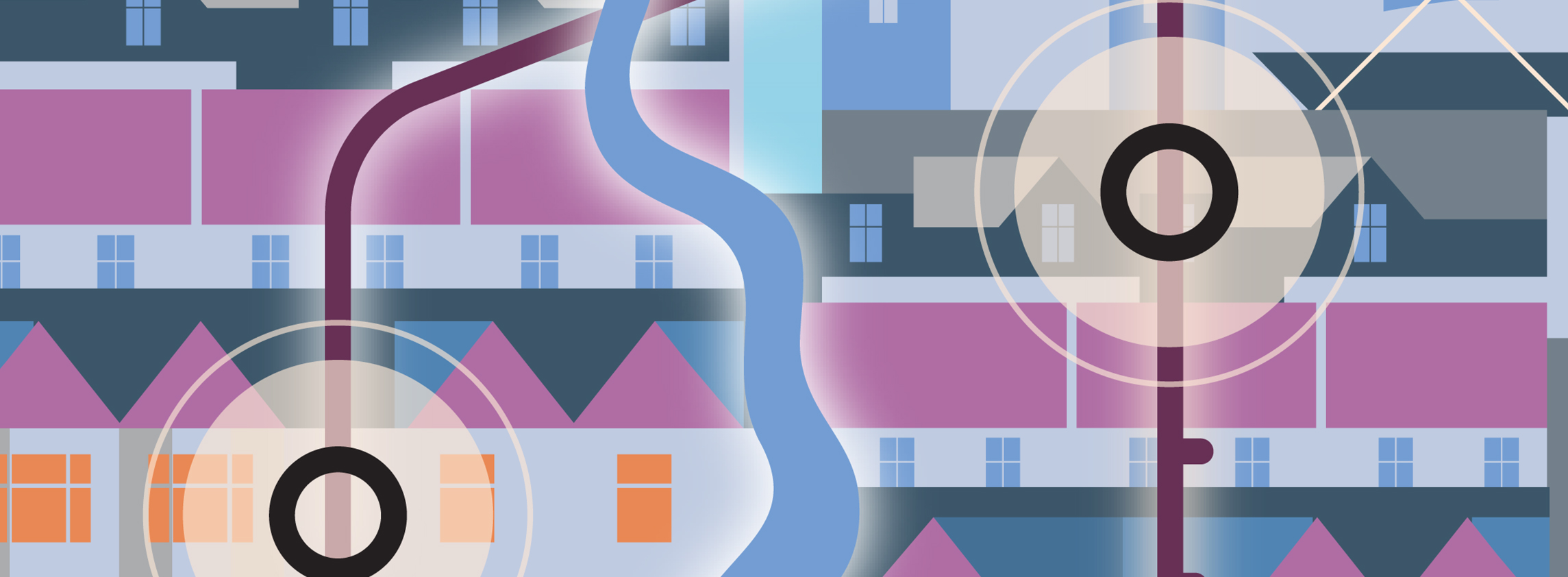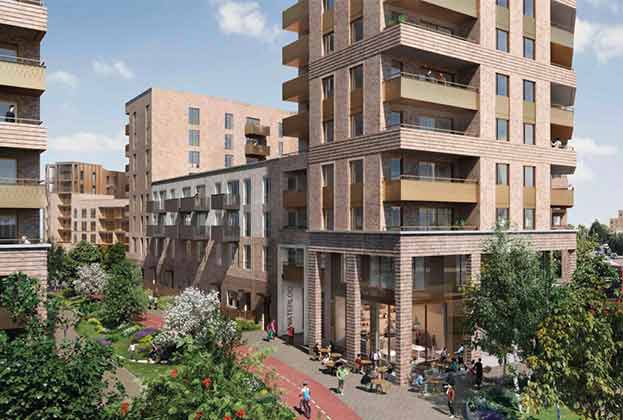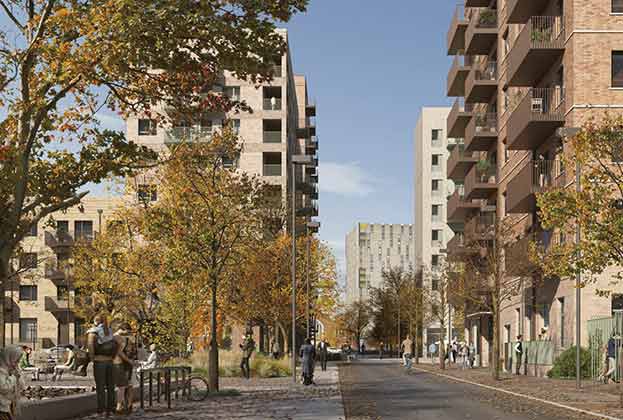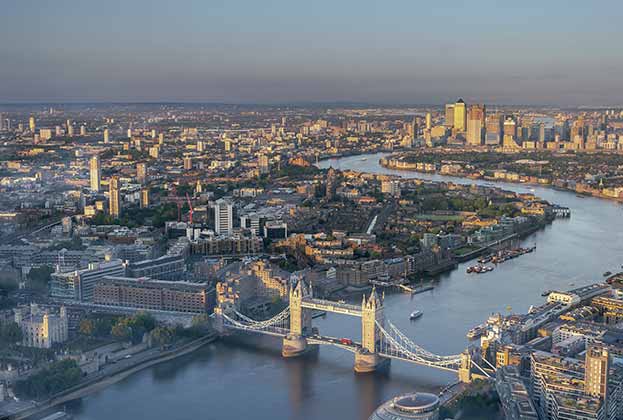Affordable foundations will support the East London Corridor as Help to Buy ends
Unique affordability
The East London Corridor is the most affordable area of London. Six of the seven East London Corridor local authorities have a lower average house price than London, in the year to November 2020. 78% of sales in the year to November 2020 were priced below £600,000 in the East London Corridor compared to 63% in the rest of London.
The median new build value per square foot was below £500 psf in Barking and Dagenham, Havering, and Redbridge compared to over £700 psf across London, in the two years to November 2020.
Analysis of demand for sale and rent in London shows that nearly 70% of all demand for housing is for homes under £450 psf. However, only a third of supply is expected to come forward at these price points. This offers an exciting opportunity for the East London Corridor to capitalise on this unmet demand.
Young singles and couples using Help to Buy to get on the housing ladder
The majority of Help to Buy users in the East London Corridor are aged 26–40, accounting for just over 80% of buyers. The majority don’t have children, and those who do, tend to have children aged under 12. Those buying in Barking and Dagenham, Waltham Forest, and Redbridge are more likely to have children than those buying in other parts of east London.
The largest group of movers to Help to Buy homes in the East London Corridor are classed by Experian as ‘Metro High Flyers’, accounting for around 20% of moves. Metro High-Flyers are highly educated and ambitious 20- and 30-somethings currently renting expensive apartments, either on their own or with a partner, in the wealthy suburbs of London. They are progressing well in their chosen careers and have money to spend on technology and entertainment.
Barking and Dagenham and Redbridge attract less affluent buyers such as ‘Flexible Workforce’ who are typically aged in their late-20s and 30s and live in a combination of single households and home shares in reasonably high-value locations from which they can easily commute to their jobs.
This has shown that there is a variety of household types using Help to Buy in east London. The investment into leisure and social offerings has attracted more affluent households, whilst the underlying affordability in the outer boroughs has helped less affluent households to get onto the housing ladder via Help to Buy.
East London Corridor’s affordability is even more important as Help to Buy ends
Help to Buy has supported 12% of new build completions in London from Q2 2016 to Q2 2020, but is due to end in 2023. Usage is particularly high in Barking and Dagenham and Havering, at 24% and 28% respectively. But these areas are also the most affordable and will be most able to attract buyers from across London whose purchasing power is curtailed as Help to Buy ends.
The median income for a first-time buyer household in London buying with Help to Buy is £64,000, according to MHCLG. Assuming these buyers can borrow at 4.5 income, the maximum property they can afford decreases from £526,000 to £362,000 on an 80% loan-to-value (LTV) mortgage, and even further to £305,000 on a 95% LTV mortgage. The map (below) shows the locations in London which would have been affordable to these households based on average sales price in the year to November 2020. Large parts of the East London Corridor, particularly Barking and Dagenham, are affordable even at a 95% LTV mortgage.
What role could Shared Ownership and First Homes play post-Help to Buy?
Shared Ownership accounted for 52% of affordable home starts in 2019/20 in the East London Corridor, up from 38% in 2015/16. Income and deposit requirements for Shared Ownership are very similar to Help to Buy and lenders are broadly familiar and confident with lending on it, meaning the scheme could be in pole position to replace much of the demand lost from Help to Buy post-2023.
First Homes, the new government affordable home ownership programme, will offer discounts of between 30–50% of market value to first-time buyers. As yet, there is no given timeline for rollout; however, there are plans that a minimum of 25% of all affordable housing delivered through S106 planning obligations will be First Homes.
Income thresholds are higher for First Homes than Shared Ownership. In London, for a 700 sq ft two-bedroom First Home, taking into account the income cap of £90,000, only 10% of households have enough income to be able to afford the home that aren’t able to afford it in the open market. The greatest impact will be in more affordable boroughs such as Havering, Barking and Dagenham, and Redbridge where at least 15% of local households fall within this income sweet spot.
Will the Mortgage Guarantee scheme help buyers in east London?
The government has pledged to support homebuyers’ access to mortgage finance through a new guarantee on 95% LTV mortgages, which is due to run from April 2021 to December 2022. The guarantee announced resembles the Help to Buy: Mortgage Guarantee scheme that ran from 2013 to 2017. Between October 2013 to June 2017, the Help to Buy: Mortgage Guarantee scheme supported only 1,179 sales across the East London Corridor. Take-up of this new scheme is likely to be limited across London due to restrictions on high loan-to-income mortgages.
Help to Buy is likely to retain its competitive edge over the next two years. Even if a government guarantee helped bring high-LTV mortgage rates down, these loans would still be much more expensive than the 75% mortgages Help to Buy users can access.
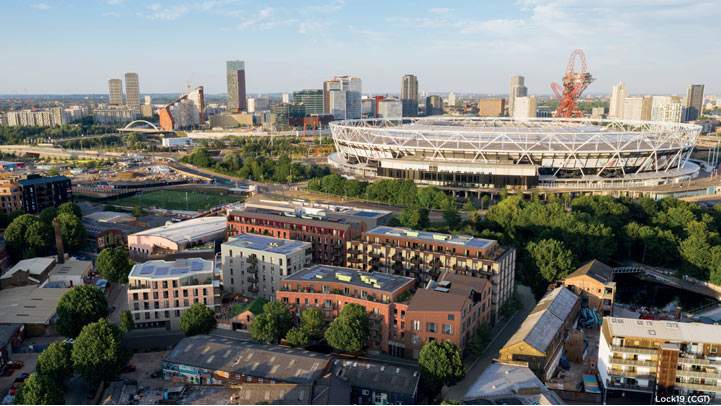
The next five years
Forecasted house price growth in mainstream London is 12.6% over the next five years. However, fewer affordability pressures in the East London Corridor provides the opportunity to outperform London as a whole.
Summary
The East London Corridor offers homes at affordable price points, which are in high demand across London. This puts the area in a very strong position to see robust levels of demand when Help to Buy ends in 2023 compared to other parts of London.
Read the articles within Spotlight: East London Corridor Development below.
